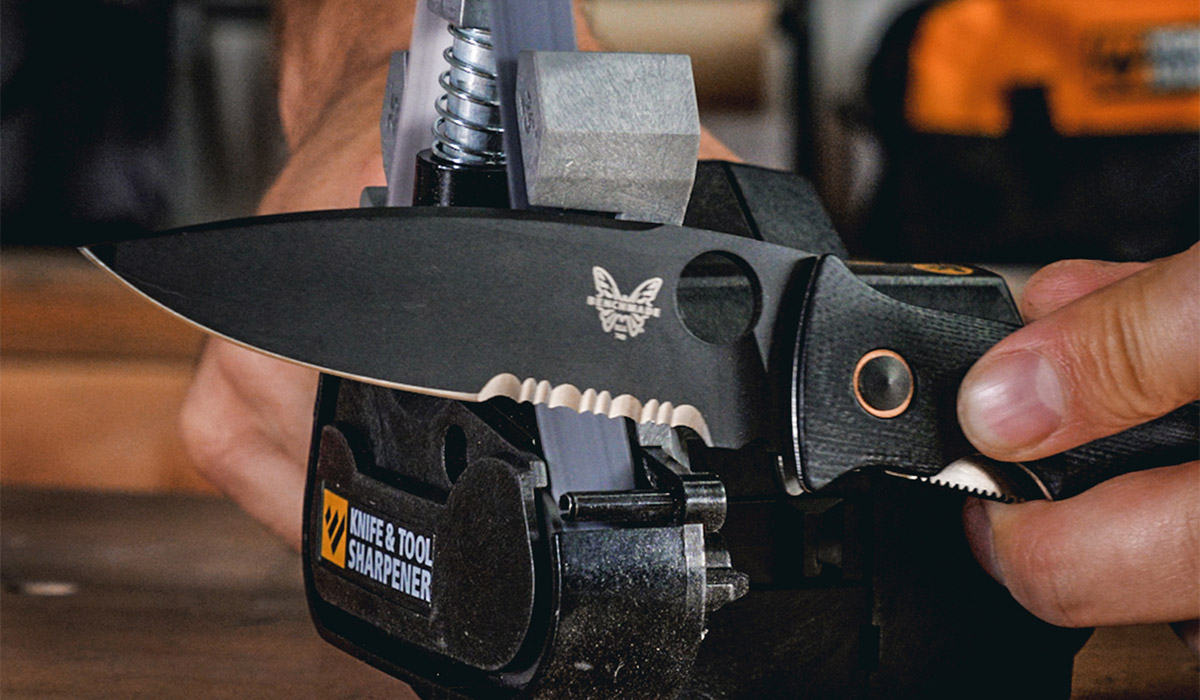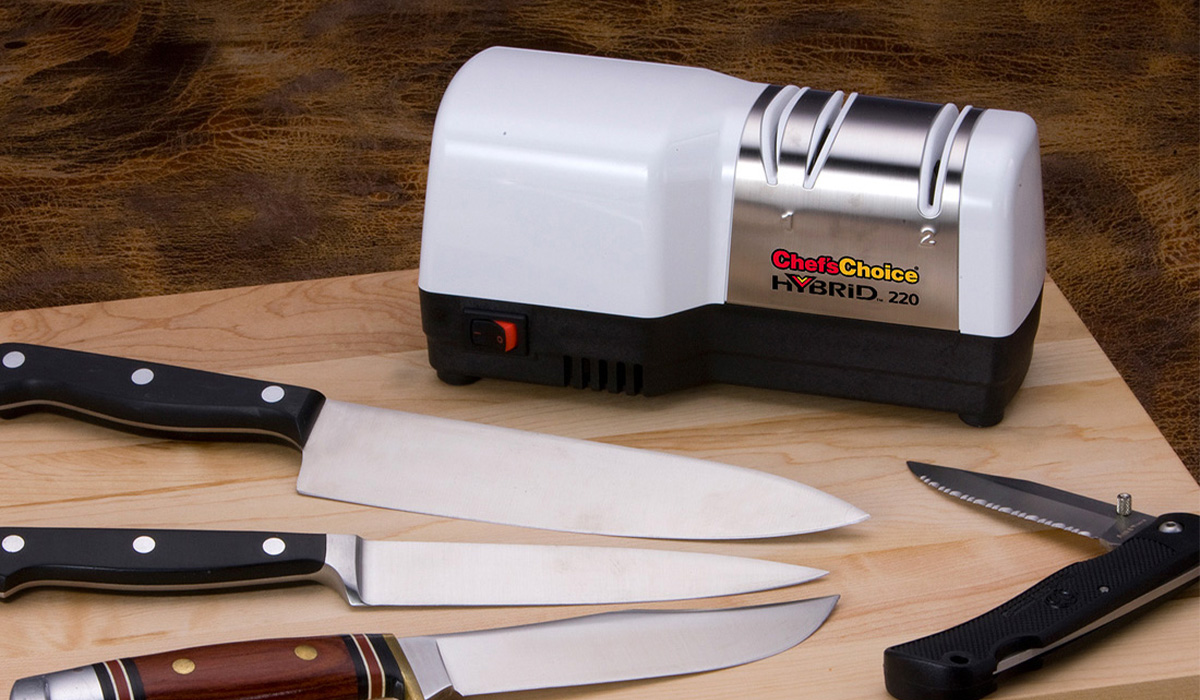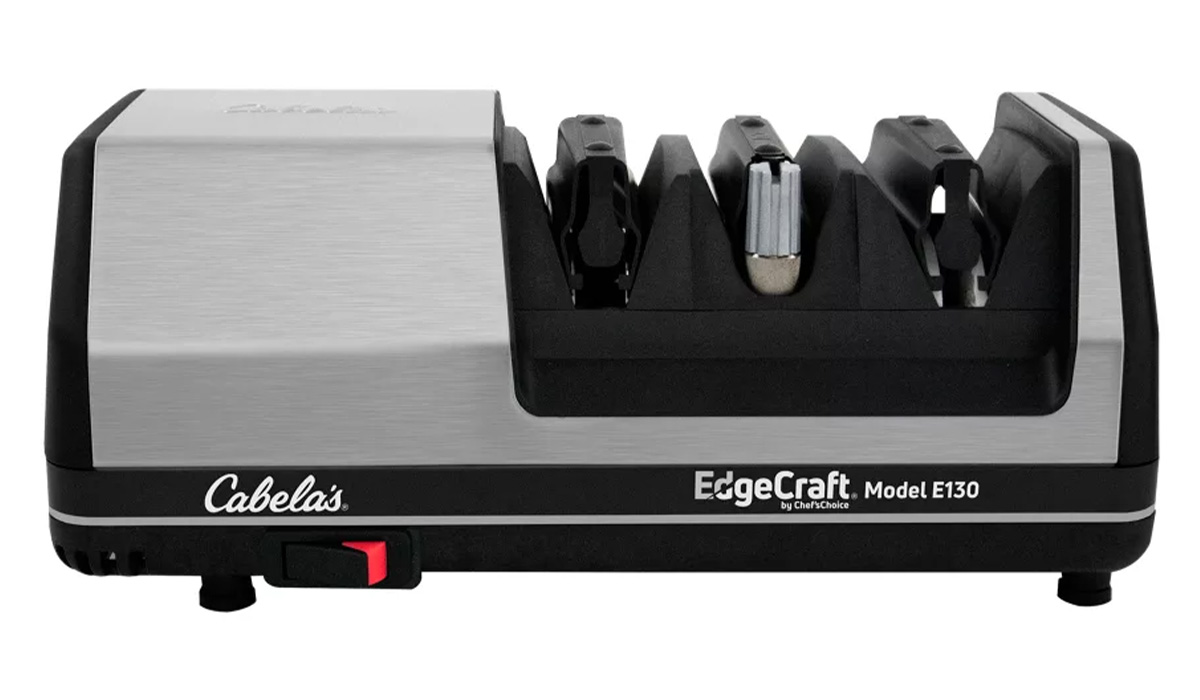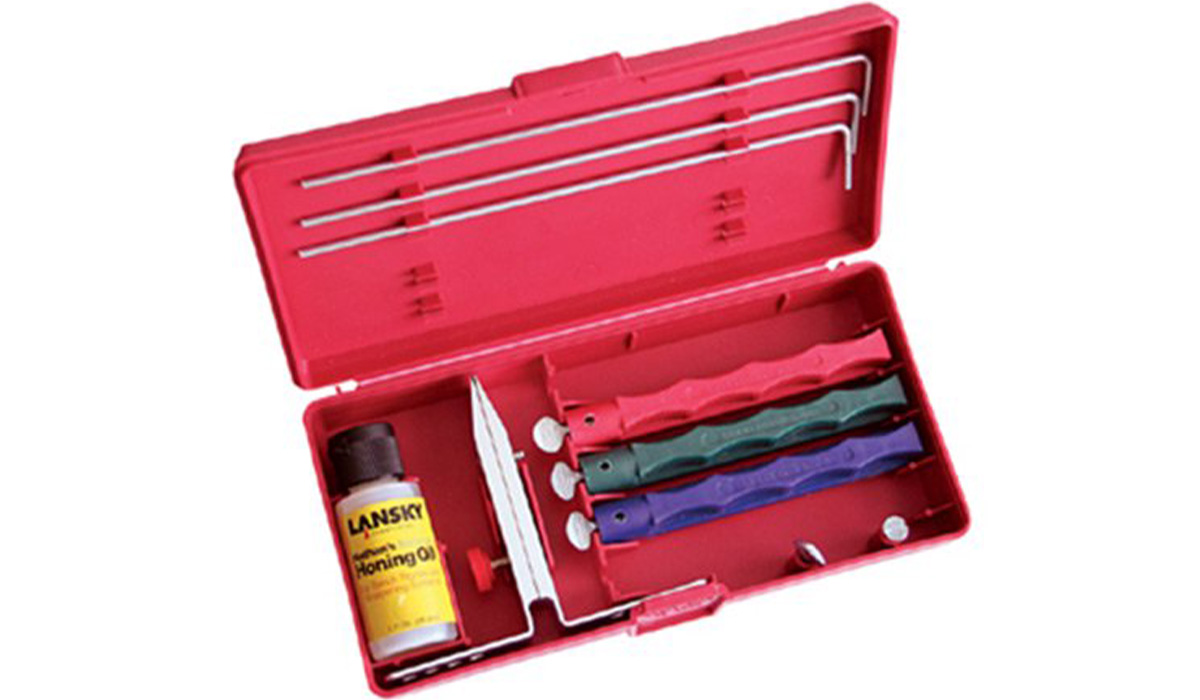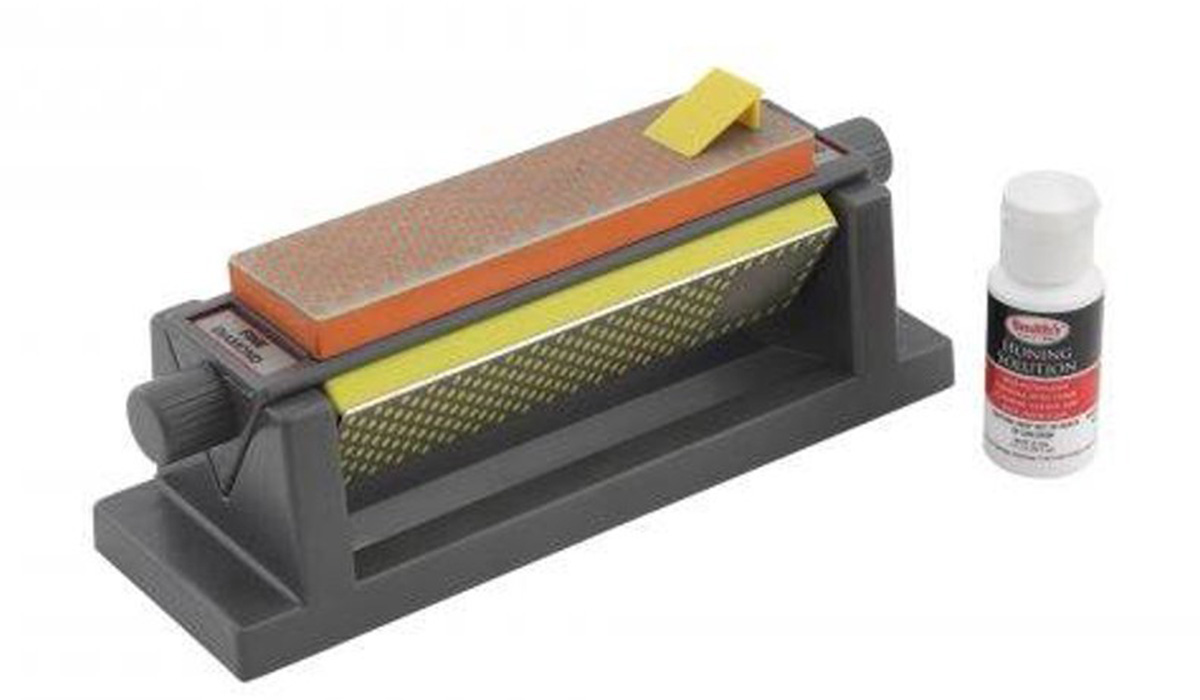Derrek Sigler 02.24.21
Outdoor enthusiasts such as ourselves always come prepared with a knife of some kind. Whether you’re fishing, hunting, hiking, off-roading or any other outdoor activity, you need to have a knife with you for any number of reasons. But that knife is no good to you if it is dull. Dull knives can make some cuts impossible, and other more time and energy consuming. A dull knife can ruin fishing and game meat. It can also mean the difference between making it back to your home, at least on time. Let’s face it, a dull knife is really frustrating and not really good for anything, so why deal with it? We looked at what’s available and came up with a list of some of the best knife sharpeners to help you keep your edge.
Table of Contents
2. Chef’sChoice 2-Stage Knife Sharpener
The Chef’s Choice sharpener has a cool hybrid technology that combines both electric and manual sharpening. The electric stage sharpens while the manual stage hones, creating a sharp blade that is durable. It has 100% diamond-abrasive wheels in both stages. The sharpening wheels sharpen simultaneously “into” and “out-of” your blade for a burr-free edge. The micron-size diamond abrasives in stage 2 ensure a highly polished edge. The hybrid sharpens both straight and serrated knives, too.
Pros/Works on both straight and serrated blades
Cons/Only one type of contour for the blade
Bottom Line/A great way to have a sharp- polished edge
3. EdgeCraft E130 Electric Knife Sharpener
Have you ever seen an expensive knife ruined by someone that doesn’t know anything about sharpening a blade? We have an it isn’t pretty. That’s the beauty of the Edgecraft E130. This thing is foolproof in that anyone with any skill level can effective get a perfect edge on a blade, every time. The E130 is a three-stage, fully electric sharpener. The first stage uses 100% diamond abrasive discs for deburring and grinding. The second stage is hardened sharpening steel for shaping and edging the blade. The final stage is made up of flexible stropping discs for polishing and refining to make a perfect, razor sharp edge. This unit works with all blade types, including serrated, making it perfect for all of your outdoor adventures, as well as your kitchen and utility knives.
Pros/Simple and perfect for a clean, sharp blade every time
Cons/The unit is a little on the pricey side
Bottom Line/You don’t have to be an expert knife sharpener to get a perfect edge every time
4. Lansky Standard 3-Stone Knife Sharpener System
The Lansky system has been around for a while and is an extremely effective way to hone a perfect edge to your blade. If you’re not that experienced, we suggest you practice some, as the Lansky system takes some practice. It has three hones – 120-grit coarse, 280-grit medium and 600-grit fine. Like the other sharpeners in this list, these three hones allow you to make a perfect edge. The Lansky multi-angle clamp holds your blades securely and you can select from four sharpening angles: 17º, 20º, 25º, 30º to get you to the perfect one for your blade. The kit also comes with extra-long knife clamp screws for thicker blades, three guide rods, honing oil and easy-to-follow instructions for those not familiar with the Lansky.
Pros/A classic manual knife sharpening system for a perfect edge
Cons/It takes practice for those without much sharpening experience
Bottom Line/Perfect system for sharp knives that can travel to camp with you
5. Smith’s Diamond Tri-Hone Bench-Top Sharpener
Smith’s 6-inch Diamond Tri-Hone is perfect for sharpening pocket knives, hunting and fishing knives, kitchen knives, and cutting tools of all sizes, large and small. If it has an edge, this will sharpen it. The Smith has two interrupted surface diamond sharpening stones with Smith’s Micro-Tool Sharpening Pad. The third side is a natural Arkansas stone for finishing and polishing the cutting edge. All three stones are mounted on a triangular shaped base with handles on the end for easy stone rotation and easy to identify stone labels. The stones are held in place by a sturdy, non-skid stand. A sharpening angle guide and one-ounce bottle of premium honing solution are included.
Pros/Bigger surfaces make it easier to sharpen any edged tool
Cons/This works best for those with experience, or those with patience while they learn
Bottom Line/A great knife sharpener for the home or shop
Knife sharpening 101
There are two basics to getting the perfect edge – sharpening and honing. We’ll get to homing in a moment. For now, let’s discuss sharpening. Most sharping, or whet stones are designed to be used either completely wet, which is done by soaking the stone in water until completely saturated, or by using an oil designed specifically for sharpening. There are other ways, but most of us have seen the stone-type of sharpener. You draw the knife evenly across at the desired angle, often 20-degrees, but that varies. The key is, you have to draw the entire blade at the same angle.
Sharpening is drawing away microscopic amounts of metal, as well as smoothing any burrs. The actual edge of the blade will be sharp, but not smooth. For that, you will want to hone the blade.
And on to honing the blade
The smoothest part of the sharpening system, and the final step, is to hone it using a honing surface. That is often a ceramic surface, or extreme fine grit surfaces. If you’ve ever seen someone using a steel rod on a knife before cutting, this is a hone. It is polishing the edge for smoother cuts, and to knock down any small burrs. Honing is, and can be done much more often than sharpening. You can use a honing oil, too, to make the edge even more polished.
What is the best knife sharpener for beginners?
If you’ve never used any real sharpener before, look for one, like the electric models above, that has all the angles and directions taken care of for you. This makes it harder to ruin the edge and it gives you a great, sharp blade.
How often do I need to sharpen my knife?
The obvious answer is – when it goes dull, but it’s not that drastic. Often a knife that feels dull just needs to be honed. Most knives don’t need to be sharpened as often, usually just needing a good hone between sharpenings.
Can over-sharpening harm my knife?
Yes, you can sharpen a knife too much. The blade was designed with a proper bevel leading to the edge. Over sharpening can change the angles, and actually make cutting more difficult.
We are committed to finding, researching, and recommending the best products. We earn commissions from purchases you make using the retail links in our product reviews. Learn more about how this works.
